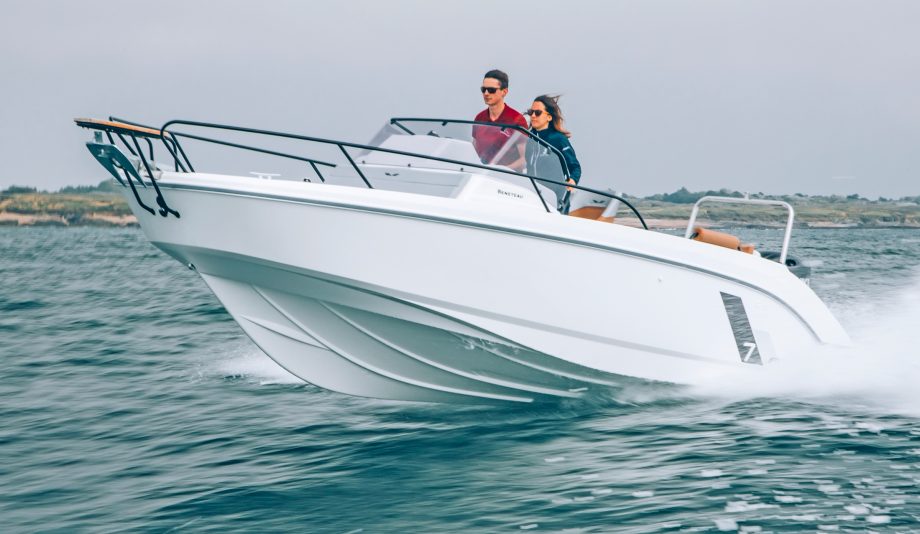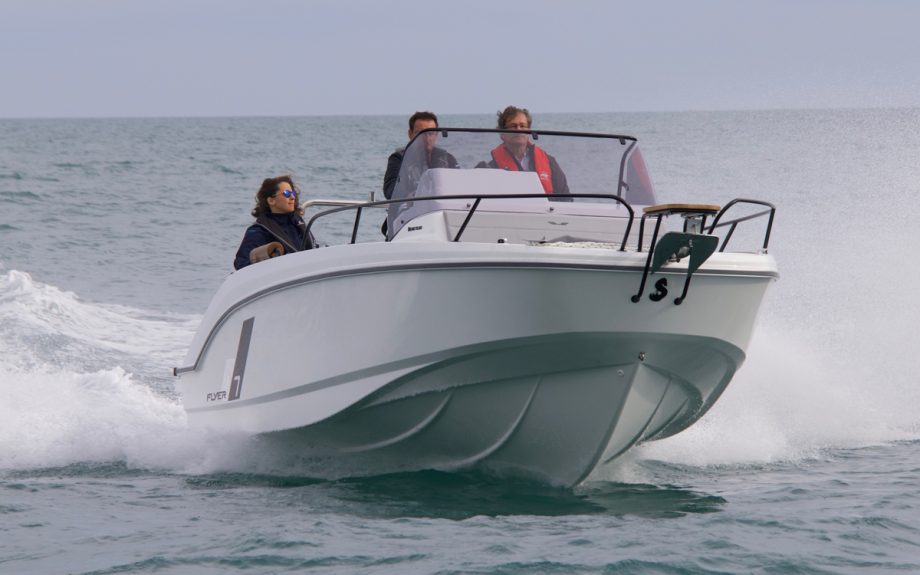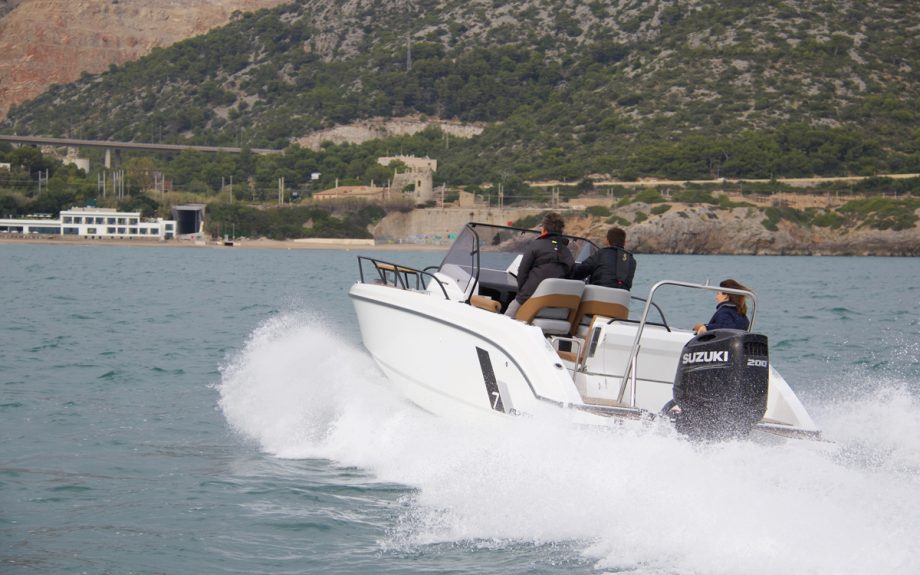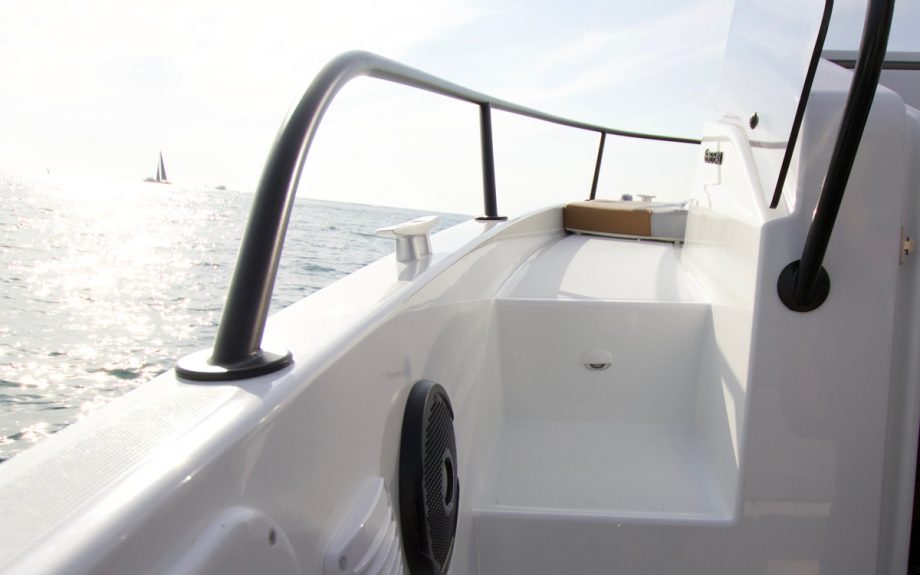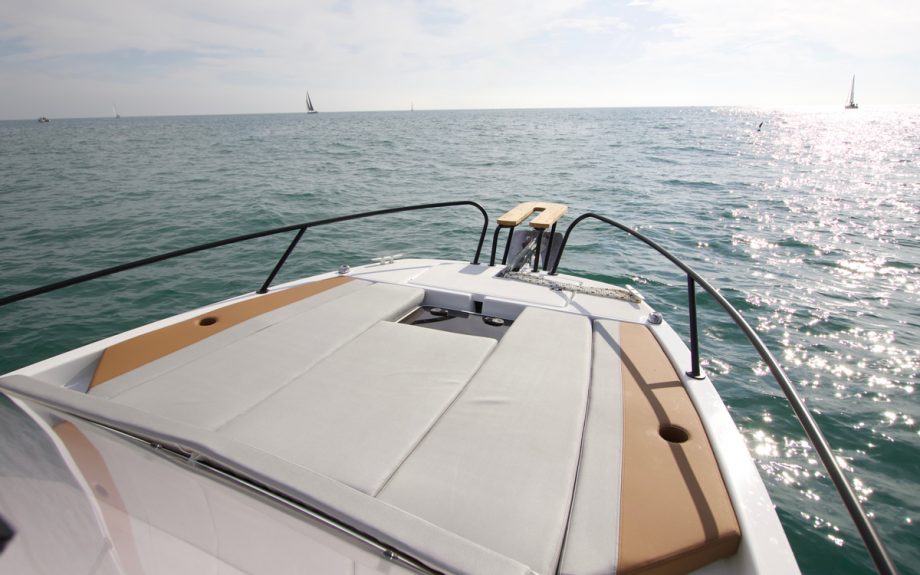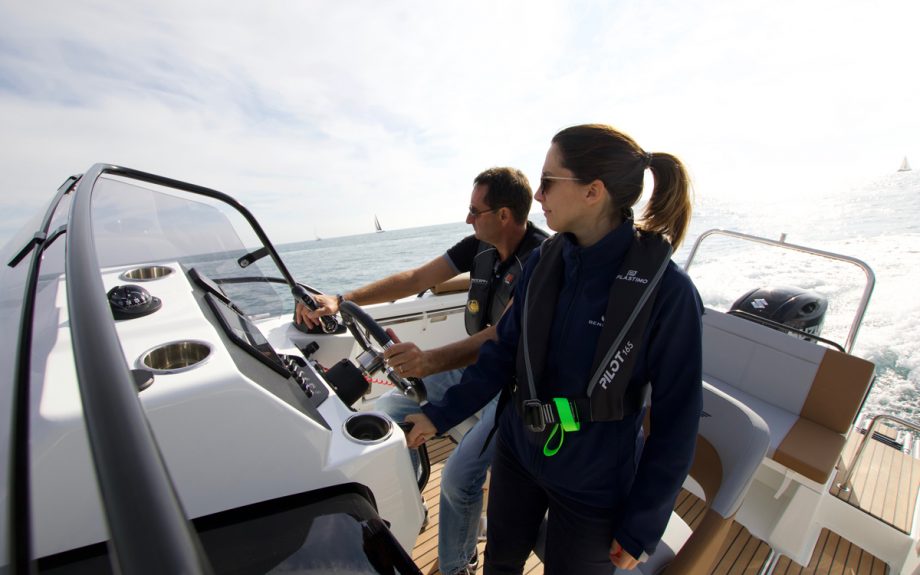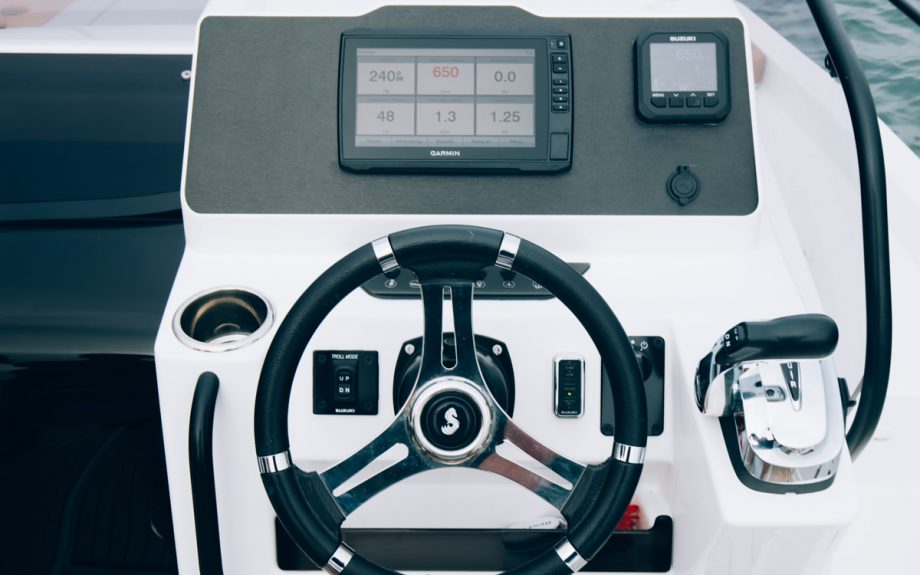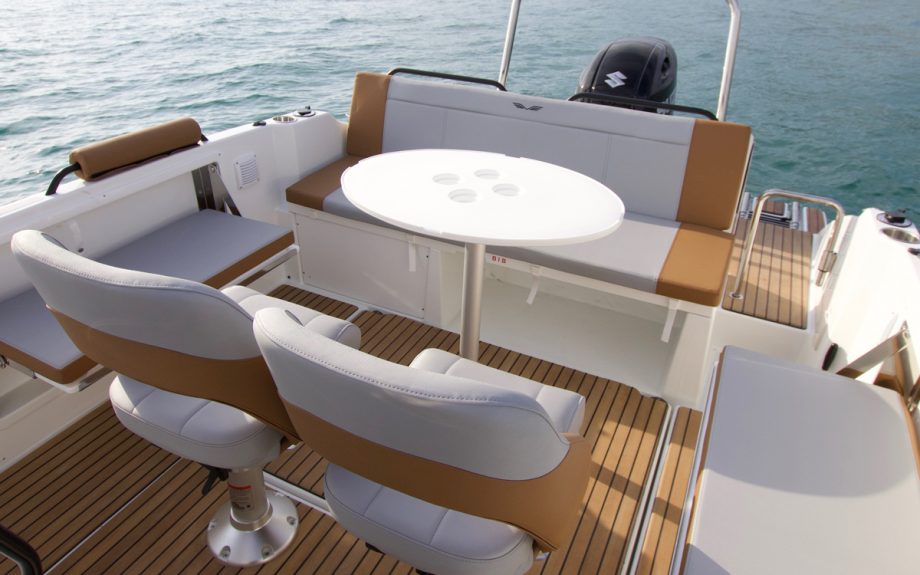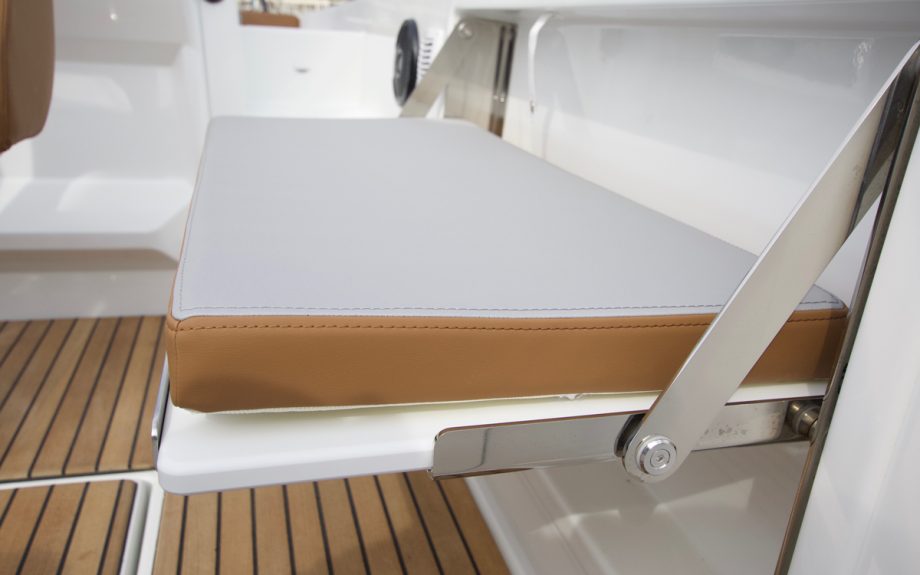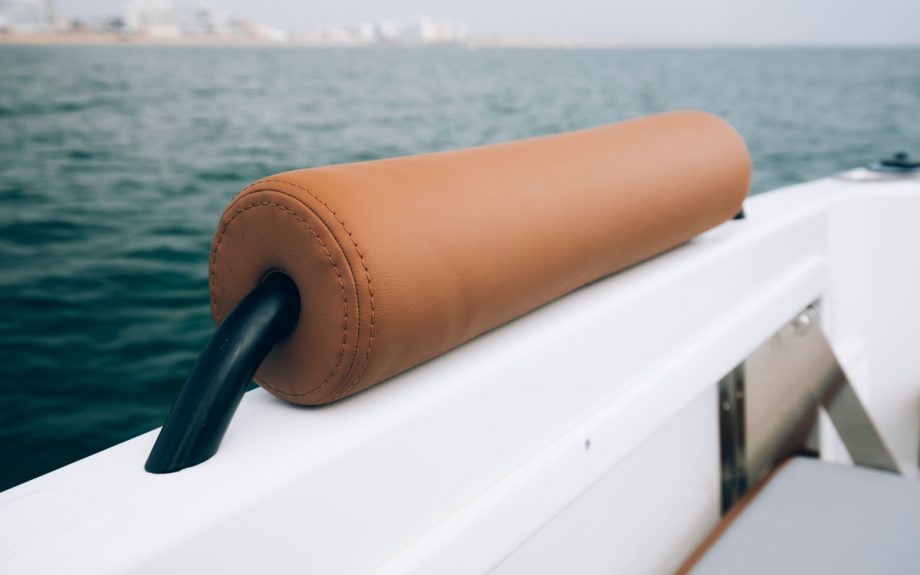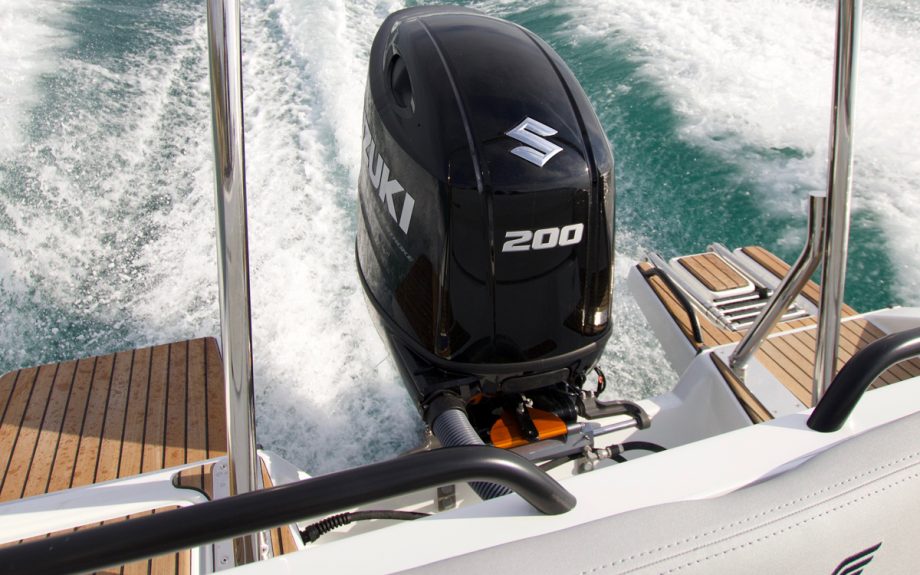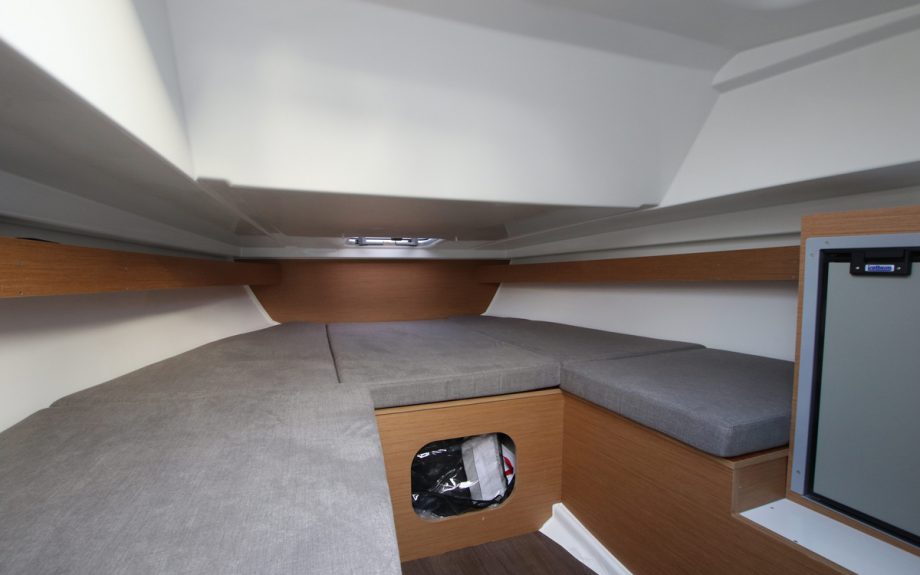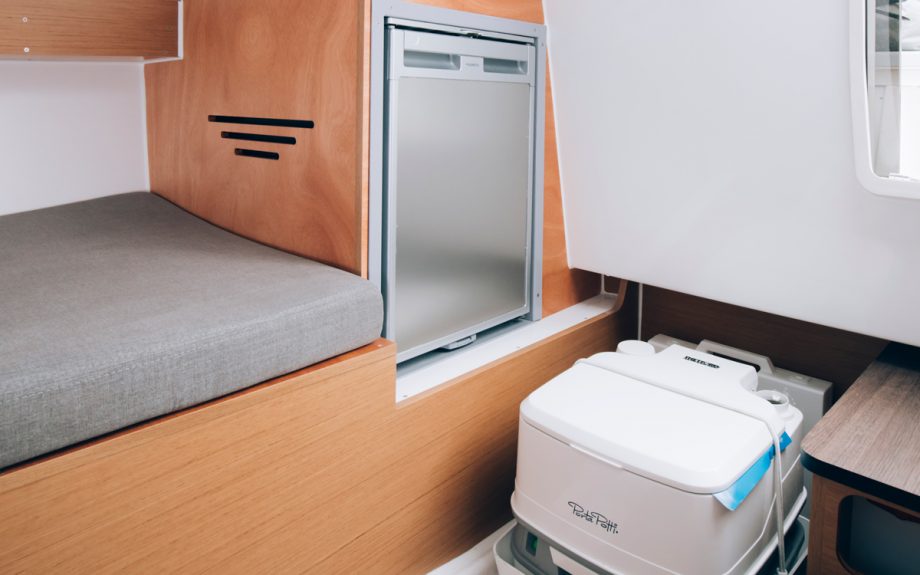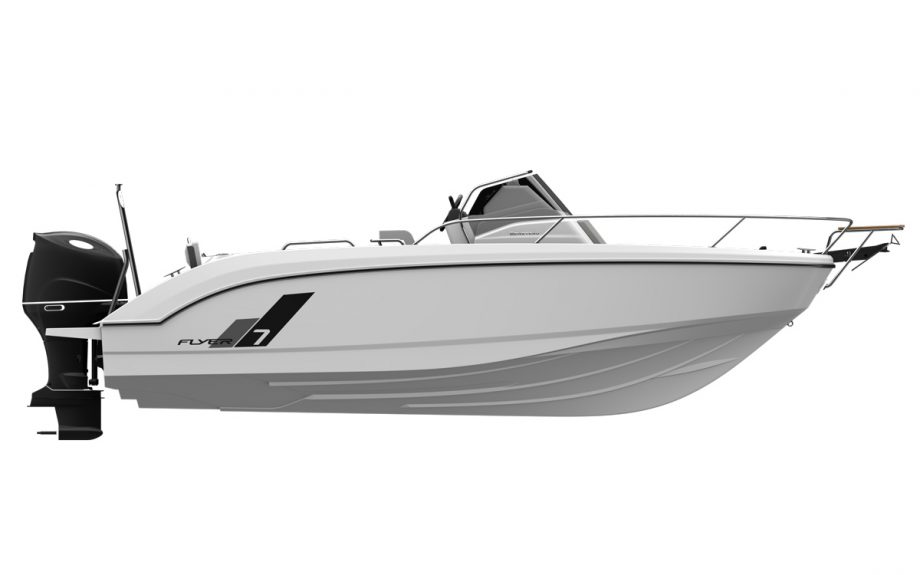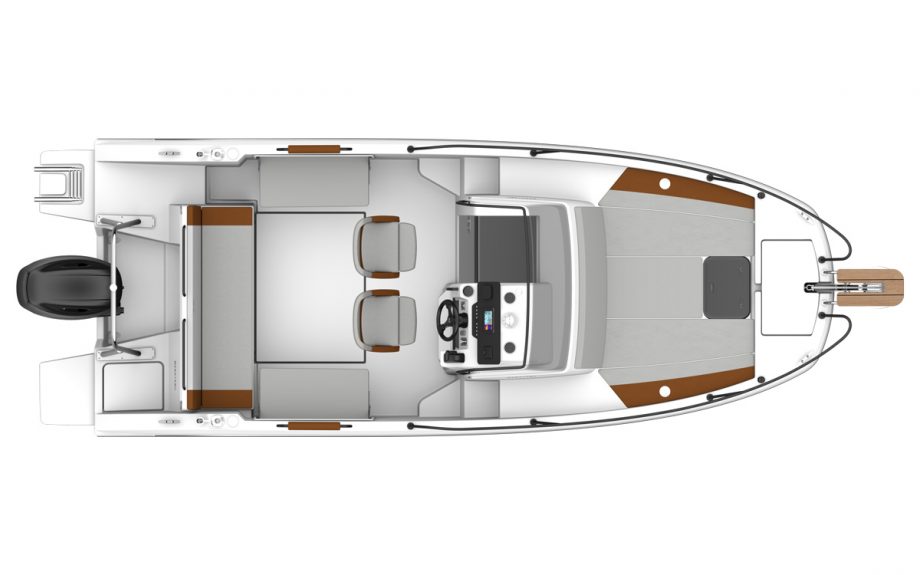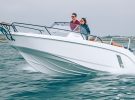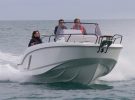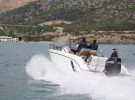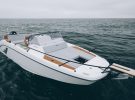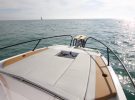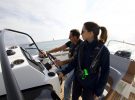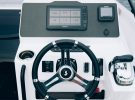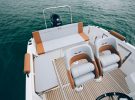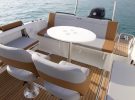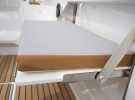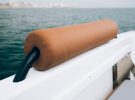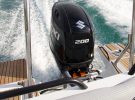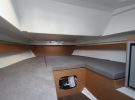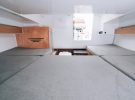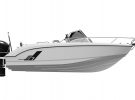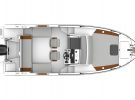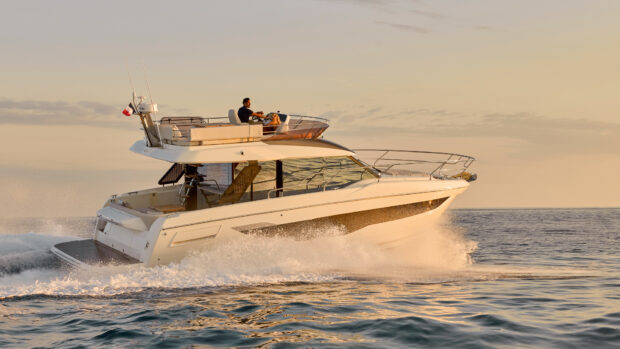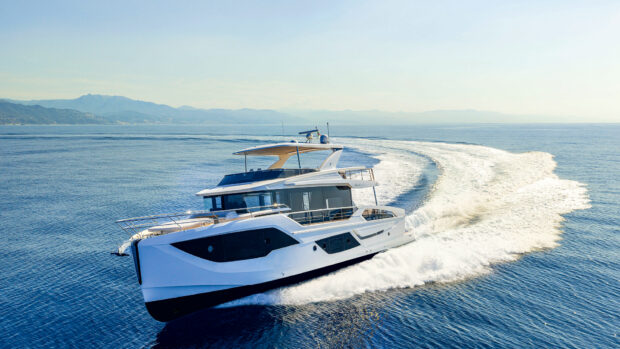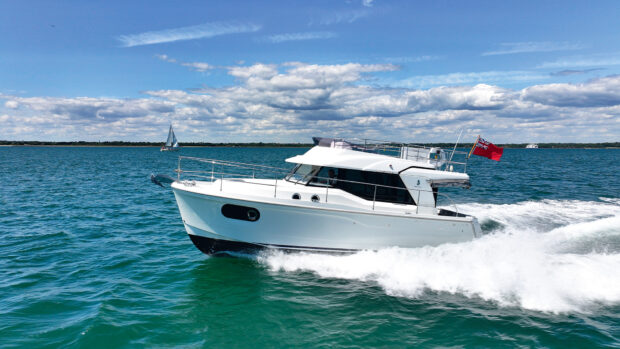The changes Beneteau has made to the new Flyer 7 over the outgoing 6.6 seem measured and incremental. However, when you look more closely, it’s clear that their combined impact is very significant.
For instance, despite an unchanged hull length of 21ft 0in (6.41m), the broader centre console brings a fresh level of versatility to the boat. With an increased internal beam of 7ft 2in (2.18m), the redesigned helm console has been shifted to the centre of the deck, creating space for a pair of symmetrical walkaround side decks and an easier flow of traffic between cockpit and bow.
To help make best use of that, there are also changes to the deck furniture. At the aft end, the stern bench features a new backrest that can be folded flat to create an extra sunpad to supplement the one on the foredeck; and up at the bow, a walk-through pulpit provides another embarkation point in addition to the two stern bathing platforms.
The general approach to fixtures and fittings also seems to have taken a step forward. While in the past, the 6.6 tended to come across as slightly insubstantial and toy-like, the new Beneteau Flyer 7 feels just that bit more grown up and sophisticated. The relocated console, for instance, replaces the frameless tinted screen of the old model with a far more substantial wraparound version that does a much better job of sheltering two people from the elements.

Side benches flip up when not in use and aft bench folds flat to make another sunpad
It also boasts a peripheral steel rail to hang onto as you move around the boat. And in a similar nod to practicality over stylistic indulgence, the distinctive grey plastic columns that used to decorate the aft end of the grab rails are gone, giving the Flyer 7 a significantly cleaner and more classical profile.
Performance
The helming experience feels equally well judged. Certainly, a planing time of 6.5 seconds from rest and a top end of 37 knots might appear fairly modest for a focused sportsboat, but on a platform of this scale with such balanced and game handling, it feels much faster and more engaging than the figures suggest.
You could of course save a little money by opting for the standard 150hp outboard, but Suzuki’s top-rated four-cylinder DF200 seems to bring out the best in the new Flyer 7. With plenty of trim sensitivity at the helm, plus ample throttle response from 14 to 32 knots, this cabin-equipped 21-foot runabout delivers a surprising degree of entertainment. And with that 200hp engine, it also retains a useful margin for extra passengers, weighty baggage and a variety of towed watersports.
Article continues below…

Beneteau Flyer 8 Sundeck: Stylish looks backed up by sporty performance

Jeanneau Cap Camarat 7.5 DC S2 review: Much more than just a dayboat
From the clever cockpit to the wonderfully grippy hull, there’s a lot to like about the latest Jeanneau Cap Camarat
£77439
If the performance feels optimised for multi-activity recreation, the layout enjoys similar flexibility. A pair of rotating helm seats and fold-down side benches with integrated cushions makes it very quick to turn the cockpit into a six-man dining station. And the fact that the aft bench is offset to starboard means that, even in sunpad mode, there is plenty of space to move unimpeded from the aft swim platform to the forepeak.
The bow deck is quite elevated in order to generate the space for the cabin below but, with the new screen surround in one hand and the raised grab rail in the other, heading up the steps to the forward sunpad feels impressively secure, even in a beam sea.

Both berths are a decent length, even with the optional fridge
Cabin space
As for the cabin itself, Beneteau has made intelligent use of limited space by means of an asymmetrical bed that measures 6ft 1in (1.85m) on the starboard side, before butting up against the optional fridge. On the port side, it extends further aft, creating a useful seat for getting changed, as well as some easy-access storage opposite the chemical toilet.
In the absence of any hull windows, natural light is quite restricted. In fact, with the sliding door shut, the only point of ingress is a small hatch, built into the forward part of the deckhead so it’s by no means the brightest or most open-feeling cabin, even for a 21-footer.
Price as reviewed:
£58,500.00 inc. VAT
Verdict
That said, there’s no doubt that the new Flyer 7 knows exactly where its priorities lie. While the bow cabin is a great storage space and a handy option for overnight ‘camping’, this is first and foremost a dayboat. It is designed to deliver an affordable, feel-good open boating experience, with fun performance, dynamic looks and a layout that can cater for eight in a variety of ways. It does all of that to a degree that soundly trumps its predecessor while still sneaking under the £50,000 threshold, which in today’s market has to be considered a particularly good result.
Details
Starting price: £47,481 (inc. VAT)
LOA: 21ft 0in (6.41m)
Beam: 8ft 0in (2.45m)
Displacement (light) : 1.47 tonnes (3,241lbs)
Fuel capacity : 170 litres (37.4 gal)
Engine options: Single 150-200hp outboard
Test engines: Suzuki DF200 outboard
Top speed on test: 37.0 knots
Fuel consumption @ 20 knots: 24.1 l/h


